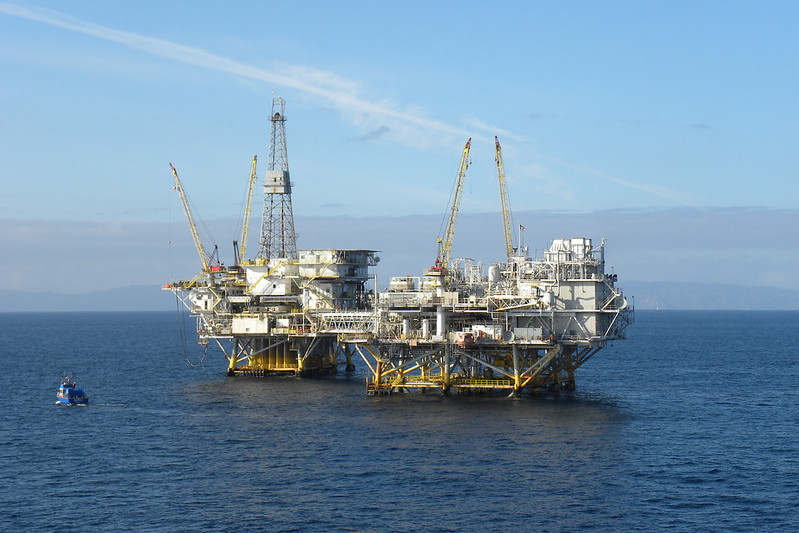
Oil production from submerged federal lands on the U.S. Outer Continental Shelf. Credit: Bureau of Safety and Environmental Enforcement
AGU News
Weather & climate 100-hour science-a-thon next week
U.S. federally-funded climate scientists and meteorologists will hold a public-facing, nonpartisan 100-hour relay of virtual 20-minute talks sharing their work and why it matters for every American. Viewers will get a chance to interact with the speakers via moderated questions. [livestream Wednesday 28 May to Sunday 1 June]
Featured Research
Storm prediction gets 10 times faster thanks to AI
Forecasters hope new algorithms will lead to earlier warnings of when dangerous weather is on the way. [Eos research spotlight][Geophysical Research Letters study]
Who’s exposed to oil and gas wastewater?
Oil and gas extraction uses a lot of water — four trillion liters in 2021. Most of the contaminated wastewater (98%) is disposed into deep injection wells, but demand for fresh water means “produced water” is sometimes put to other uses, such as irrigation, livestock watering or road treatments. Contaminated water can also leak or spill. Information is spotty about exactly which chemicals contaminate the water and their toxicity, mobility and ultimate environmental fate. A review of what is known about human exposure identifies key knowledge gaps. [GeoHealth study]
Heatwave and flooding double disasters are increasing
Some atmospheric conditions have the potential to generate paired disasters, like heat + drought or heavy rain + wind. The conditions that bring extreme heat and extreme rain are typically opposing, but synchronicity has increased 34% since the 1980s and is rising. [Geophysical Research Letters study]
Scientists reveal hidden heat and flood hazards across Texas
A wider swath of the Lone Star State may be affected by more heat and flood events than previous recordkeeping suggests. [Eos research spotlight][AGU Advances study]
Deforestation is reducing rainfall in the Amazon
Researchers found that between 2002 and 2015, a 3.2% reduction in Brazilian forest cover led to a 5.4% reduction in precipitation levels. [Eos research spotlight][AGU Advances study]
Heat and pollution events are deadly, especially in the Global South
Researchers found that the combination of heat waves and high PM2.5 pollution led to nearly 700,000 premature deaths in the past 30 years — most of which occurred in the Global South. [Eos research spotlight][GeoHealth study]
Earth’s last rapid global warming event had a long recovery
During the Paleocene-Eocene Thermal Maximum, global temperatures jumped 5 degrees Celsius in conjunction with a burst of carbon dioxide. New research suggests the recovery took more than 140,000 years — which may be bad news for our current carbon cycle situation. [Eos research spotlight][Geophysical Research Letters study]
Shade is not enough to cool old forests in a new climate
It’s usually cooler under a forest than outside the forest, but that natural temperature buffering didn’t make global warming any less strong during the last 45 years in an old-growth forest of Oregon. [Eos editors’ highlight][AGU Advances study]